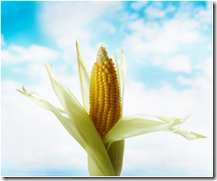The claims made  about high fructose corn syrup (HFCS) range from it being a natural sweetener that gives cookies a soft texture, bread a brown color and promotes freshness and stability in all food items, to an unnatural poison that is the primary cause of the obesity epidemic in the United States. The truth is probably somewhere in-between. Here are the facts so that you can decide for yourself.
about high fructose corn syrup (HFCS) range from it being a natural sweetener that gives cookies a soft texture, bread a brown color and promotes freshness and stability in all food items, to an unnatural poison that is the primary cause of the obesity epidemic in the United States. The truth is probably somewhere in-between. Here are the facts so that you can decide for yourself.
High fructose corn syrup was introduced in the 1970s and today is used in many consumer food items, including many brands of bread, yogurt, soft drinks, fruit juices, jam, ketchup, cereal, soup and even meat products. Using HFCS instead of sucrose saves companies about one cent per ten teaspoons used, which is equivalent to about one 12 ounce can of soda. This, in addition to the long shelf life of HFCS, is the primary reason companies use HFCS to sweeten their products.
There has been research showing that fructose is processed differently than other sugars in the body: it is more readily converted to fat and fails to trigger the release of appetite suppressing hormones like insulin and leptin. HFCS is a mixture of fructose and glucose, made either in a 55-45 fructose to glucose ratio (the kind found in soft drinks) or a 42-58 fructose to glucose ratio (the kind typically found in baked or canned goods). Is this an abnormally high level of fructose? Well, sucrose (common table sugar) is a 50-50 mixture of fructose and glucose, so, structurally, they are pretty similar. This makes it difficult to claim HFCS is much worse than normal table sugar without further research.
The rise is usage of high fructose corn syrup mirrors the rise in obesity in the United States, leading some people to believe that high fructose corn syrup is a major cause of the obesity epidemic.  However, other trends must be considered as well, such as the increase in serving sizes, decrease in exercise, mass advertising of soft drink and fast food companies, and the implementation of vending machines in schools.
However, other trends must be considered as well, such as the increase in serving sizes, decrease in exercise, mass advertising of soft drink and fast food companies, and the implementation of vending machines in schools.
The USDA recommends that we limit added sugar of any form to 10 teaspoons (40 g) a day. This does not include the sugars found in milk, fruit and vegetables, of which Americans should be eating more. In 2000, Americans ate an average of 31 teaspoons of added sugar per day. Clearly, more research needs to be done on high fructose corn sugar. In the meantime, we need to cut down on the amount of added sugars we eat, high fructose corn syrup and other forms alike.
What are your thoughts and opinions on HFCS?






I avoid HFCS. It’s scary once you start reading ingredients and see how many foods it is actually in. The only jam I could find without it is one labeled “low sugar”! There are only a few breads I can find without it in the store. It’s in Fiber One bars too (but not the Fiber Plus bars!). So unfortunate!
I try to avoid HFCS. It makes me so sad to see it in foods that are supposed to be healthy.
i try to avoid HFCS when i can but it really is scary how it pops up in foods that you would never think it woul dbe there! (like the 100%whole wheat bread i always buy!) thanks for bringing this up nicole!
Here is some info on how the body handles HFCS
http://www.uctv.tv/search-details.aspx?showID=16717
It’s probably a combination of factors, but HFCS is hardly blameless. I just posted an item on my blog at “Obesity, HFCS, and fatty liver disease in children (as well as increased heart disease risk)” – http://amidthemaddingcrowd.wordpress.com/2010/04/03/obesity-hfcs-and-fatty-liver-disease/
More info at http://amidthemaddingcrowd.wordpress.com/tag/fructose/.